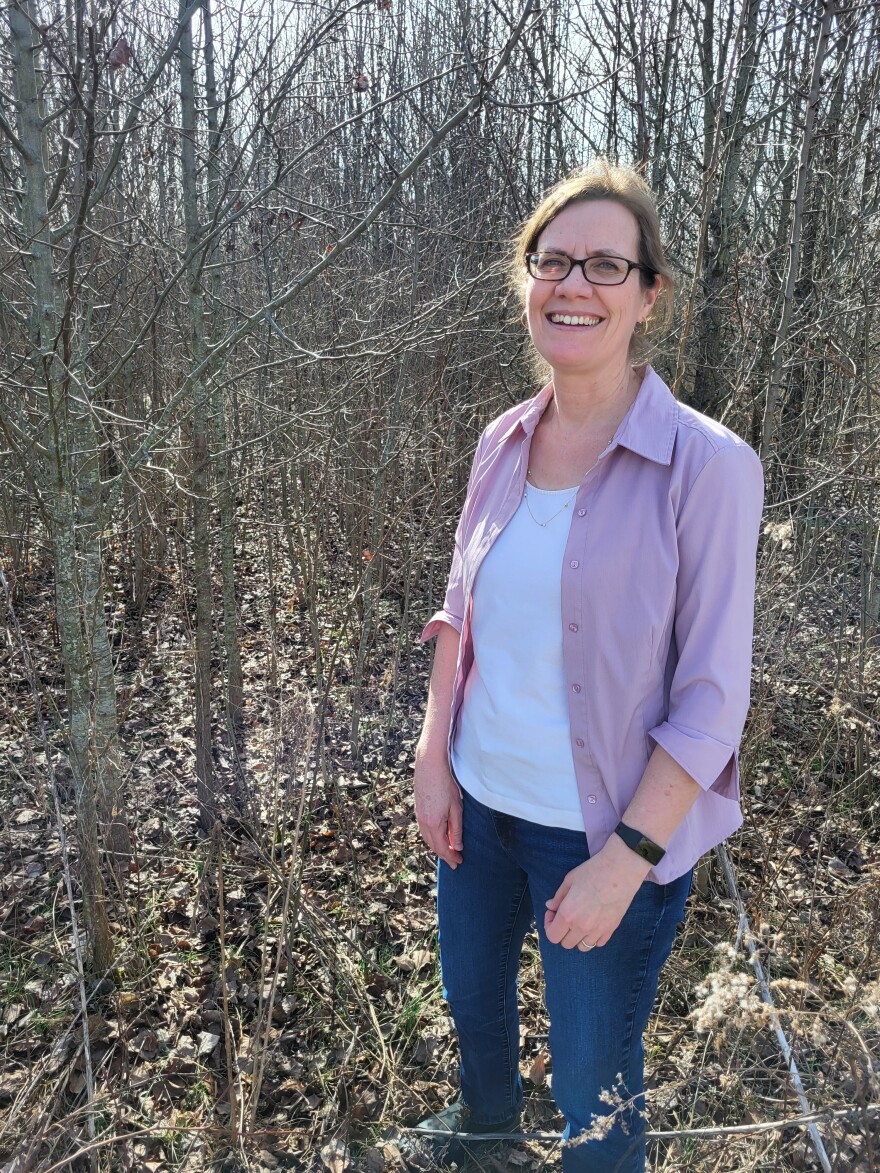Spring is upon us, which means that in Ohio, a white flowering tree with a slightly horrible odor will dominate the visual and olfactory landscapes along roadways and natural areas.
These decorative trees were originally brought to America to save the pear industry from fire blight. Now, these saviors of the fruit industry have become invaders in the landscape and are banned throughout the state.
Horticulturists have a nickname for plants that grow so vigorously that they choke everything else out. They’re called garden thugs.
These landscape bullies — like purple loosestrife, dames rocket and burning bush — were once prized for their beauty in the garden until they jumped out of the boundaries of our yards and started invading the surrounding landscapes, pushing out native species and dominating the natural environment.
Callery Pears: From saviors to invaders
The Callery pear (Pyrus calleryana) is turning out to be the king of the garden thugs and it is now prohibited to sell or plant these invasive trees in Ohio.
On a warm late winter day at Siebenthaler Nursery in Beavercreek, a group of carhart-clad workers are methodically going down rows of trees digging up specimens which they wrap in burlap and secure with wire cages for transportation.

Rhett Johnson is the nursery manager for Siebenthaler. He said “really no other tree gives you that first spring bloom, like the pear tree did, and everybody wanted it. It was probably the most popular tree sold through the 90s and early 2000s for sure.” Johnson also said the nursery used to grow about 300 a year which would usually be sold out within 2 - 3 years.
The ‘Bradford’ was the first Callery pear cultivar used in the landscape. It’s a fast growing tree with a distinctive pyramidal shape, beautiful spring flowers and fall foliage. For decades it was a staple in the landscaping industry.
During that time the tree was never invasive but it did have other problems Johnson says. “It had such a broad, dense branch structure — it was constantly spitting and breaking.”
Other varieties of Callery pear were stronger developed and didn’t split as bad, “ but, now we know, seeded prolifically,” Johnson reflected. And that’s where the trouble began. The different cultivars cross pollinated with each other and produced wild pear trees which started showing up everywhere.
Johnson said he first noticed how invasive the wild pear trees were when the nursery stopped production on a parcel of land that was going to be sold, “and within 2 to 3 years all you could see were pear trees growing all through the field in the spring.” For Johnson that was the writing on the wall for the fate of the Callery pear tree in the landscaping industry.
“Cause, you would see them down the highways and stuff, but to see it that prolific and extreme in such a short amount of time and right in front of my face on land I had been farming, I just knew it wasn’t worth growing anymore," he said.
Eliminating callery pear trees is a challenge
Elizabeth Culley is a professor at the University of Cincinnati and past president of the Ohio Invasive Plants Council. She heads the team that came up with the Ohio invasive plant list. Culley says that the Callery pear is so prolific it’s actually overtaking other invasive species.

“They start flowering when they are about 3 years old, and once they get going their roots are deep, they’re really good at what they do, they can grow in almost any environment,” Culley explained. “We are seeing a weird thing where Callery pears are actually outcompeting the honeysuckle. What you’ll notice is the pear trees are growing through the honeysuckle.”
At the Voice of America Park in West Chester, Culley pointed out the wild pear trees, which make up 90% of this wooded area. The wild pears are so close together that it would be hard to walk between them, especially with their thorny branches.
“The seeds can actually last for over a decade. So this stand that we’re seeing here, even if you were able to remove it, people are going to have to come back year after year, because there are probably going to be new saplings, new seedlings appearing for probably well over a decade,” Culley explained.
It’s extremely hard to eradicate these nuisance trees once they’re established. The best way to do this is to cut the young trees down and apply a glyphosate-based herbicide to the stump within 1 hour.
Culley said the worst way to try and eradicate them is mowing them down. “What it does is, I tell people it gets the plant mad. It will send up a whole bunch of root shoots from the base. So now, instead of a tree with one stem, you have essentially a big bush.”
Culley explained the state's recently enacted ban on Callery pears is important not just for Ohio but also to help keep these wild pears from spreading north. “Usually it's not a problem at all, the winter kills them off — any seedlings — they are going to die if they get outside the city into the forests. But now with things being warmer, we are starting to see Callery pears popping up around Madison, Wisconsin and northward.“
Other states are also working to control the wild pears. South Carolina and Pennsylvania will both have bans going into effect next year in 2024.


